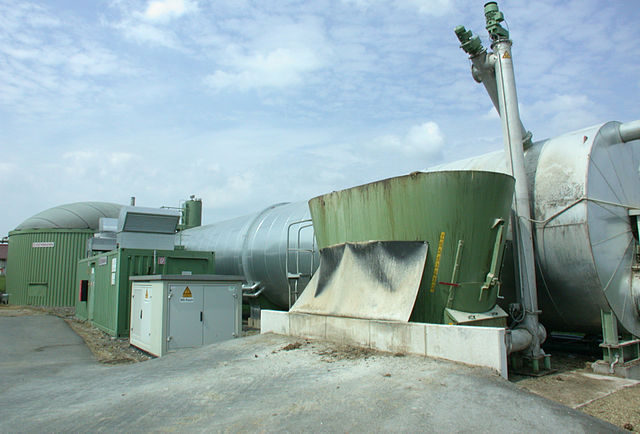Biogas is a gaseous renewable energy source produced from raw materials such as agricultural waste, manure, municipal waste, plant material, sewage, green waste, wastewater, and food waste. Biogas is produced by anaerobic digestion with anaerobic organisms or methanogens inside an anaerobic digester, biodigester or a bioreactor.
The gas composition is primarily methane and carbon dioxide and may have small amounts of hydrogen sulfide, moisture and siloxanes. The methane can be combusted or oxidized with oxygen. This energy release allows biogas to be used as a fuel; it can be used in fuel cells and for heating purpose, such as in cooking. It can also be used in a gas engine to convert the energy in the gas into electricity and heat.
Pipes carrying biogas (foreground) and condensate
Biogas production in rural Germany
"Biogaståget Amanda" ("Amanda the Biogas Train") train near Linköping station, Sweden
Biogas fueling station in Mikkeli, Finland
Agricultural waste are plant residues from agriculture. These waste streams originate from arable land and horticulture. Agricultural waste are all parts of crops that are not used for human or animal food. Crop residues consist mainly of stems, branchs, and leaves. It is estimated that, on average, 80% of the plant of such crops consists of agricultural waste.
Burning of rice residues in southeast Punjab, India, prior to wheat season
Farmer burning, on a large scale, pruning and agricultural waste, leading to smog and loss of organic matter, among other things






